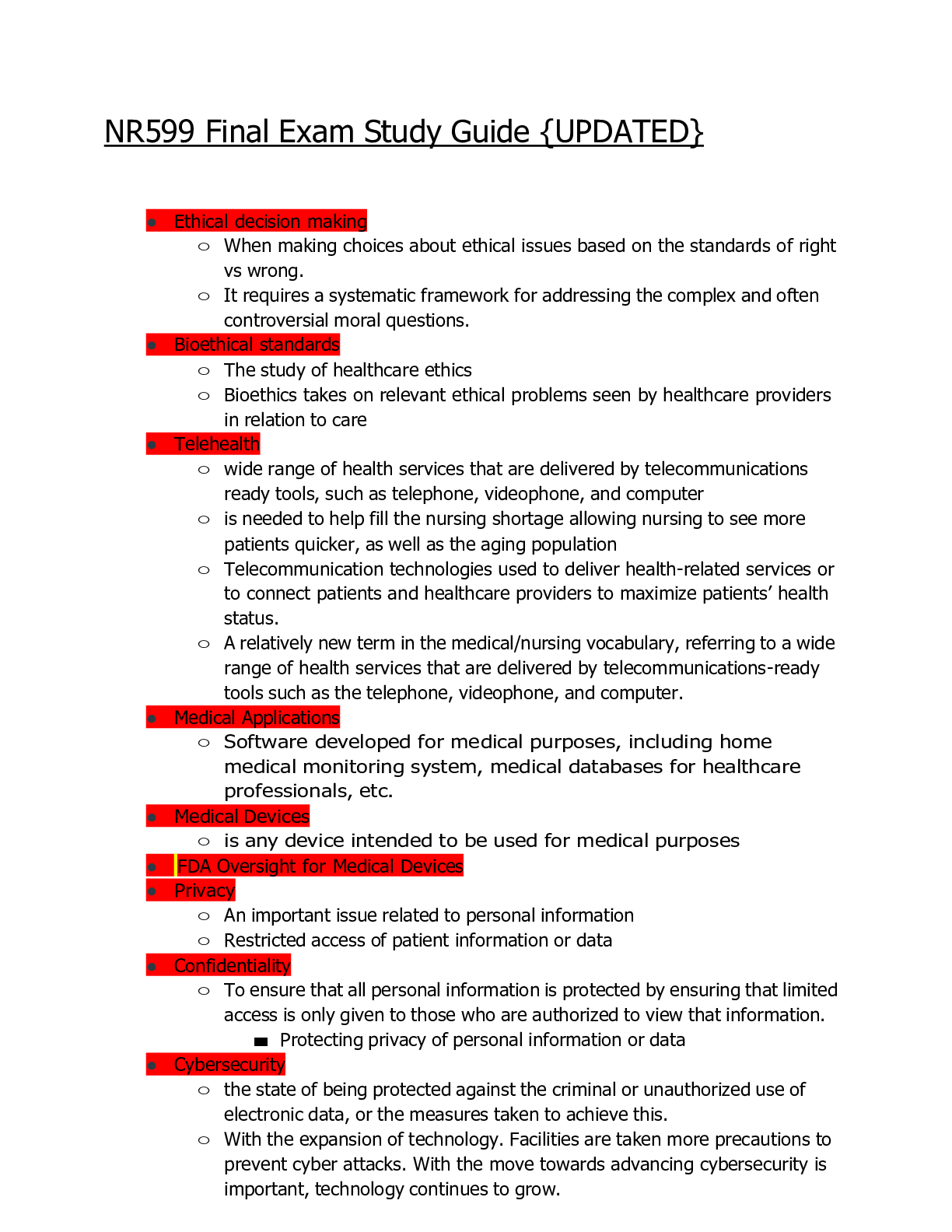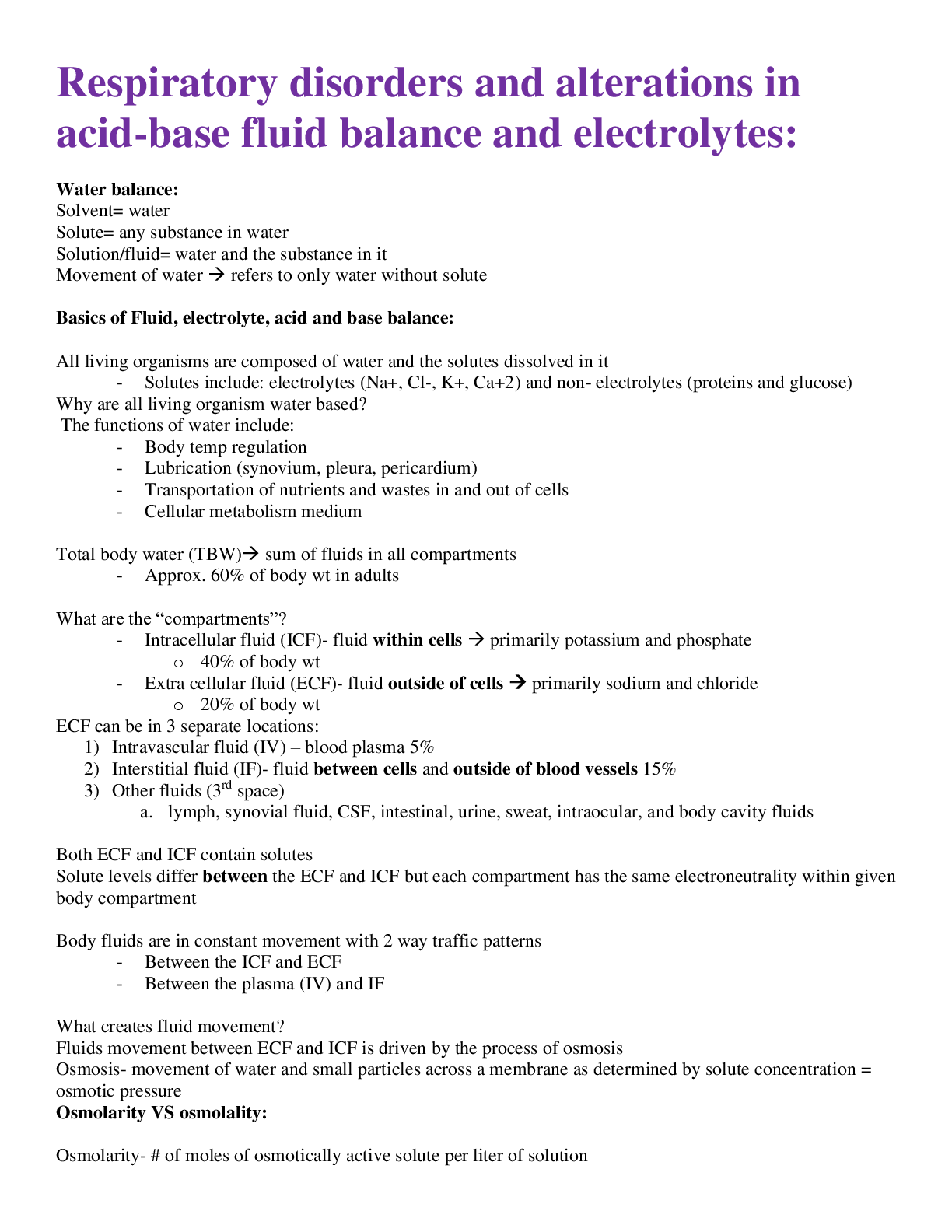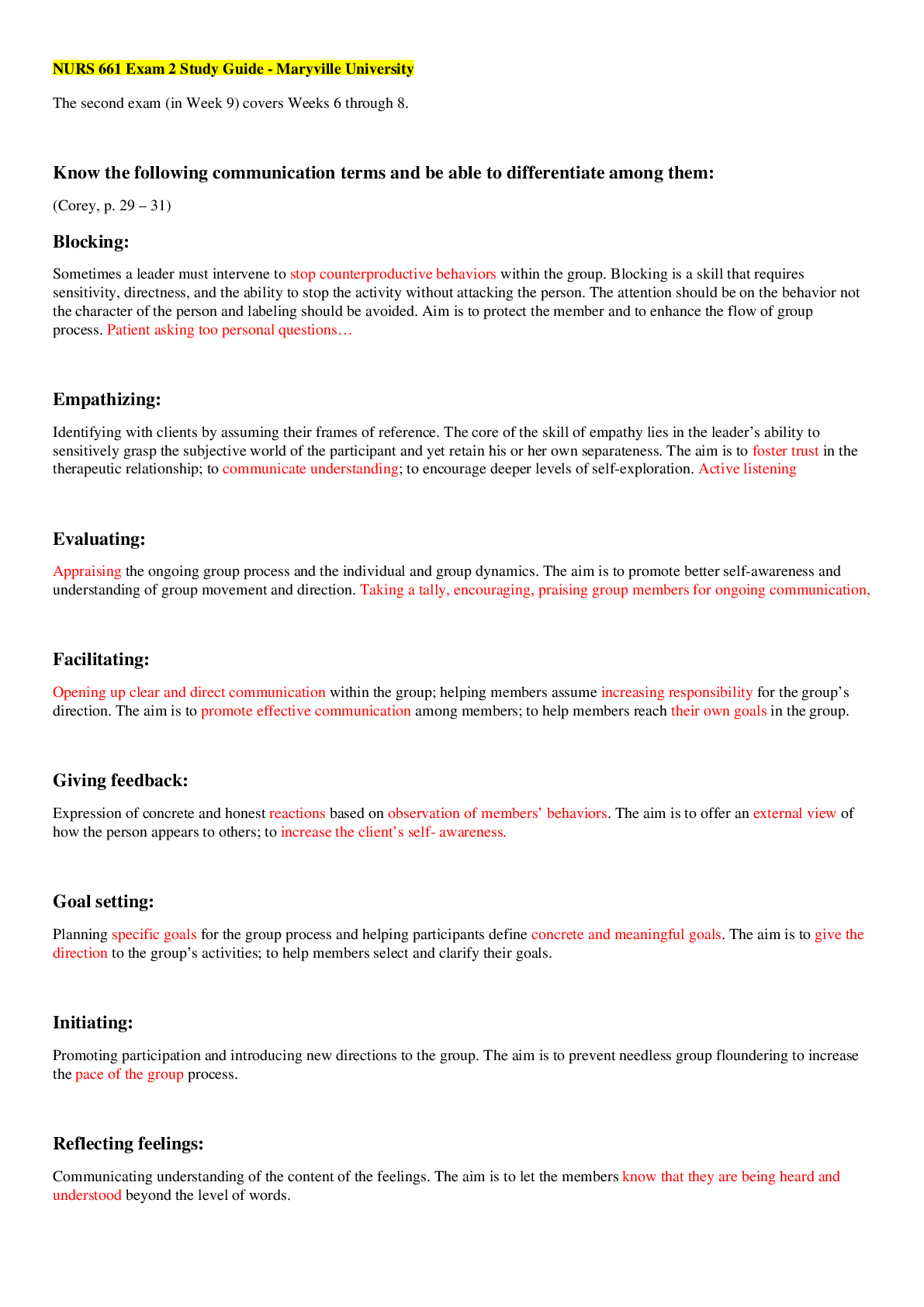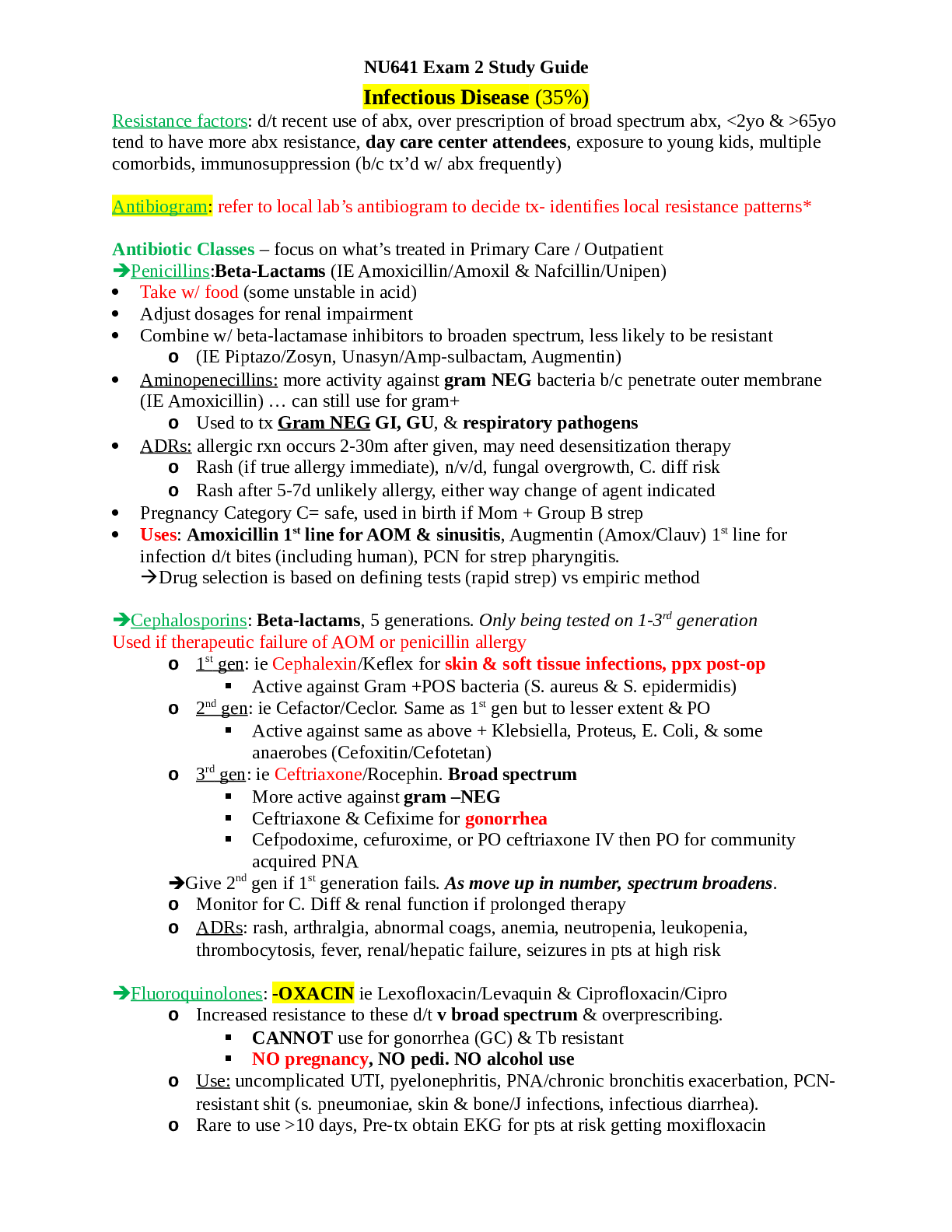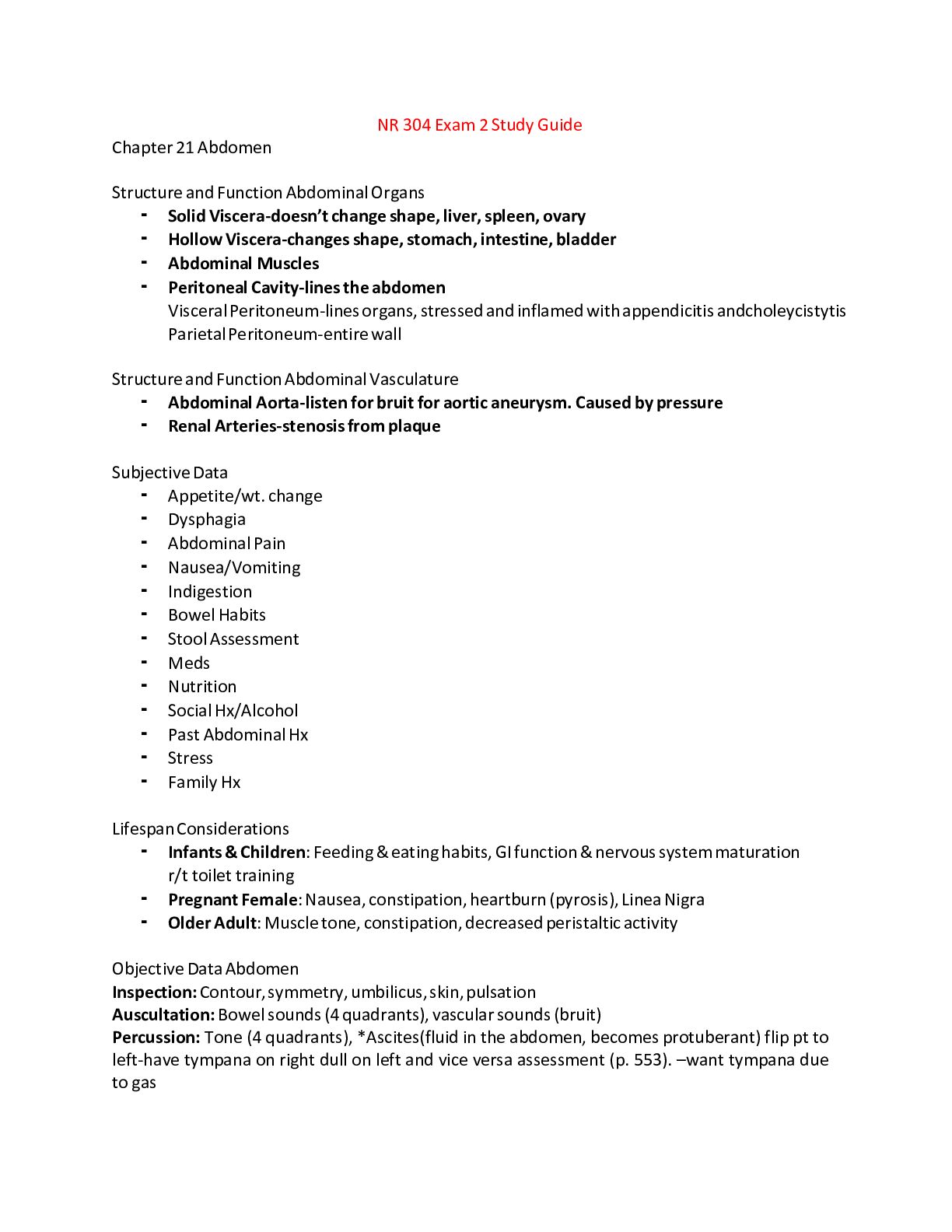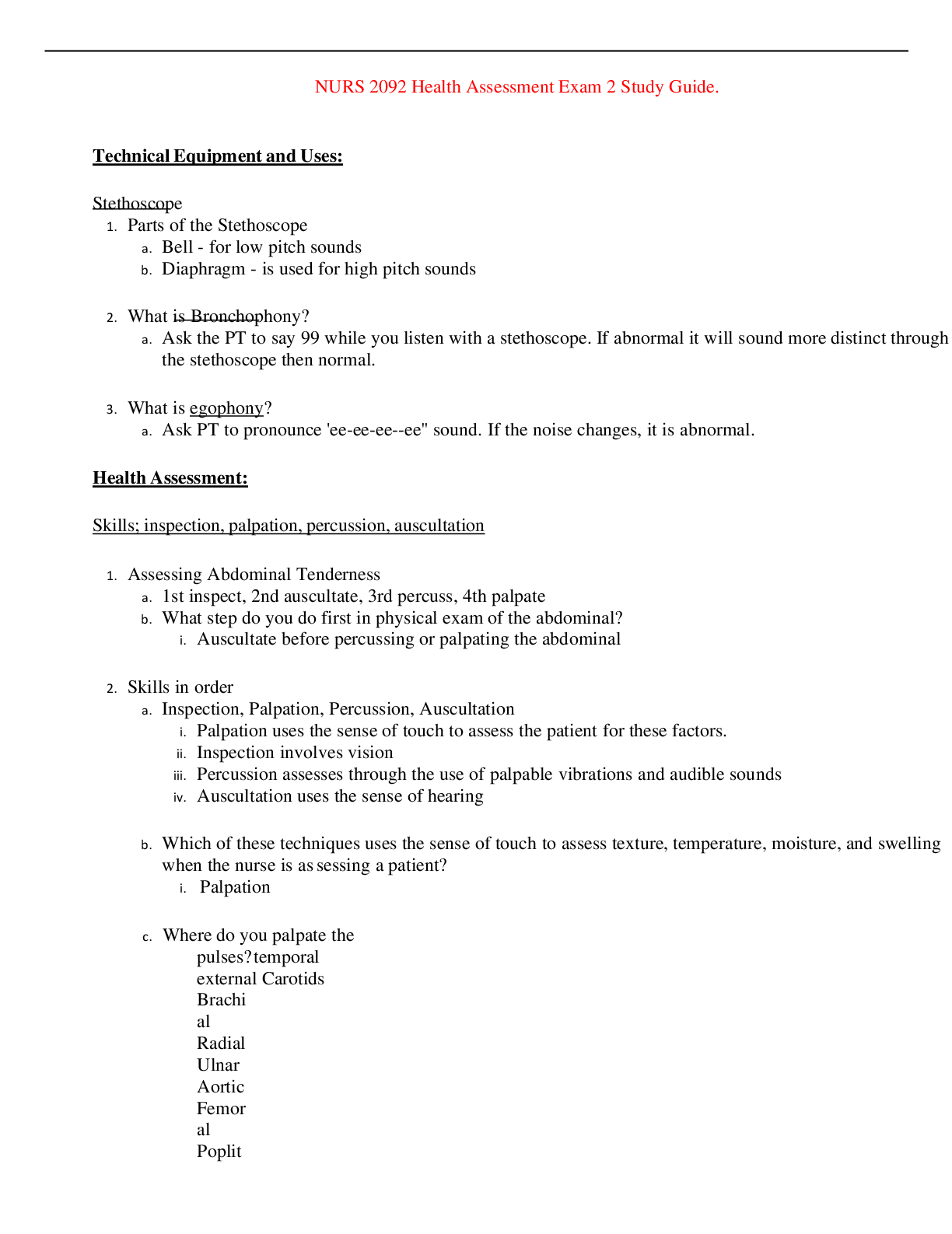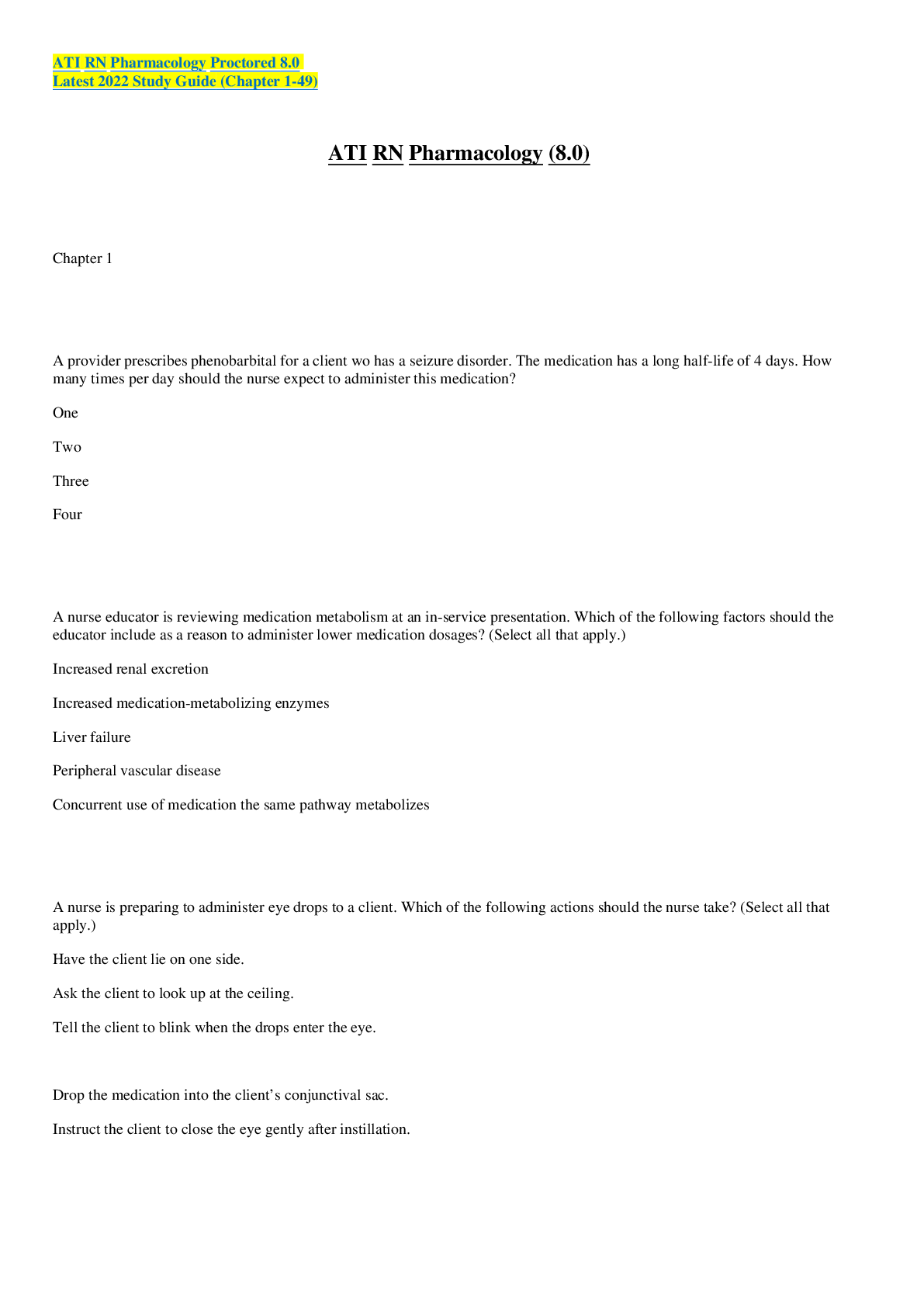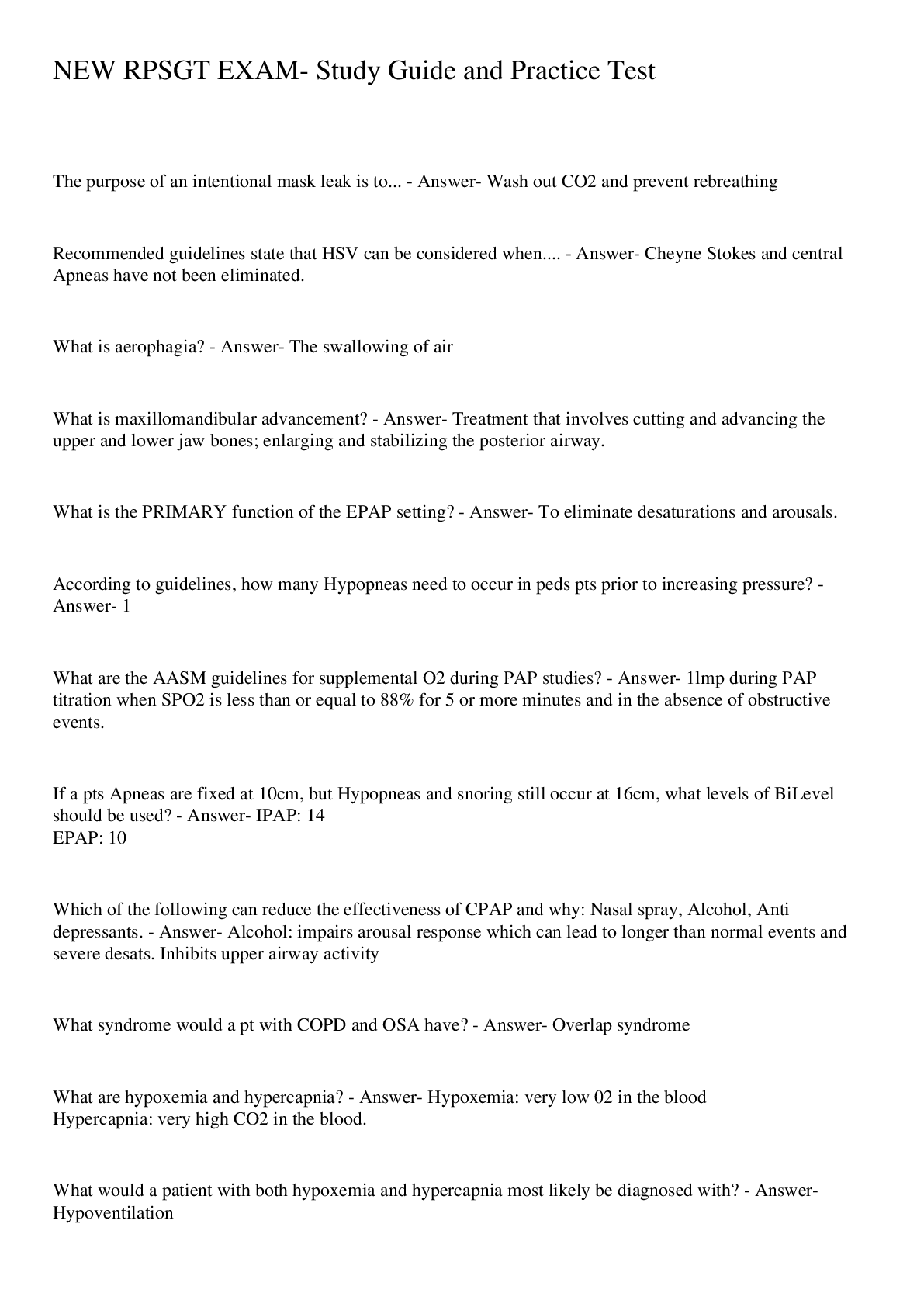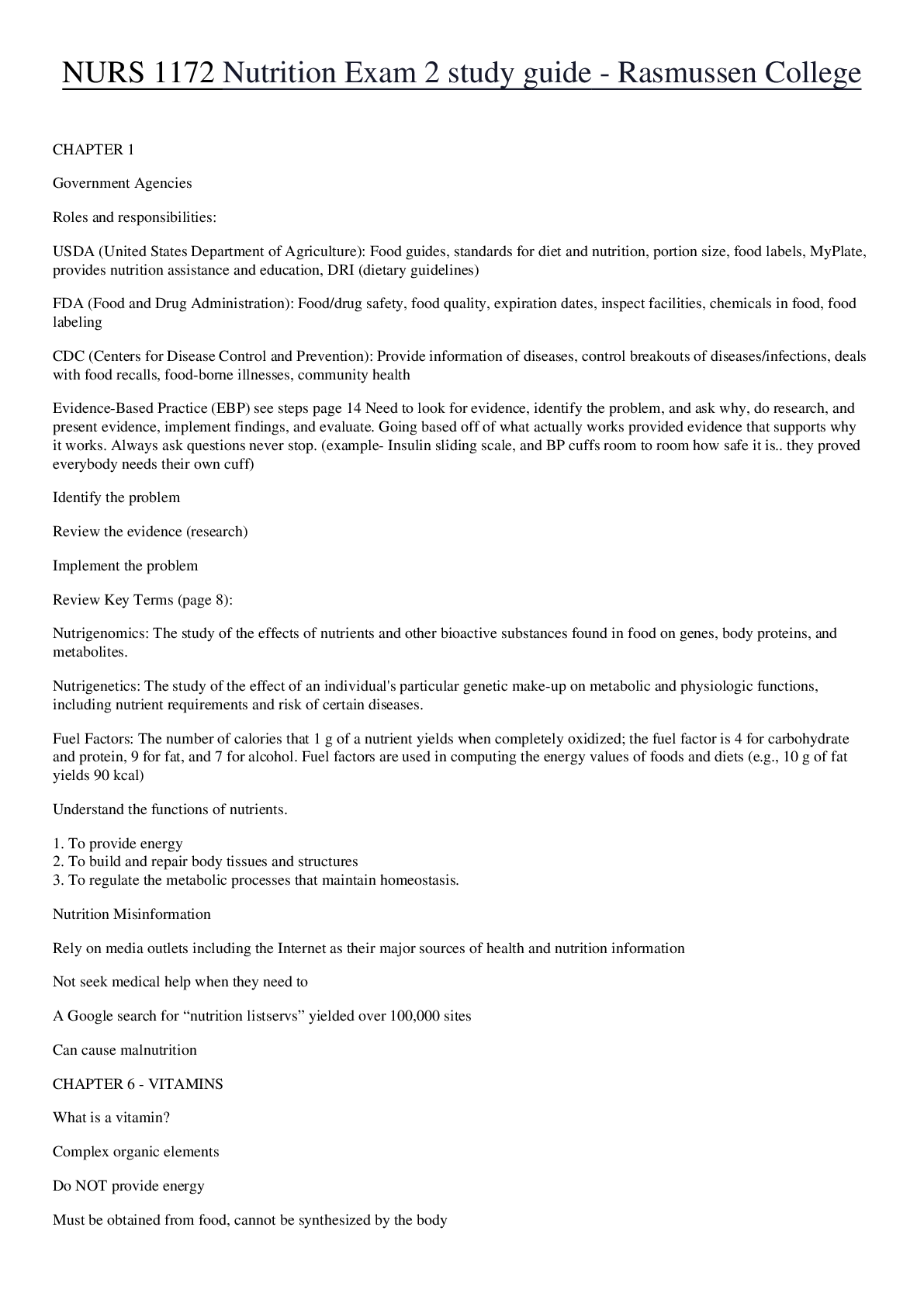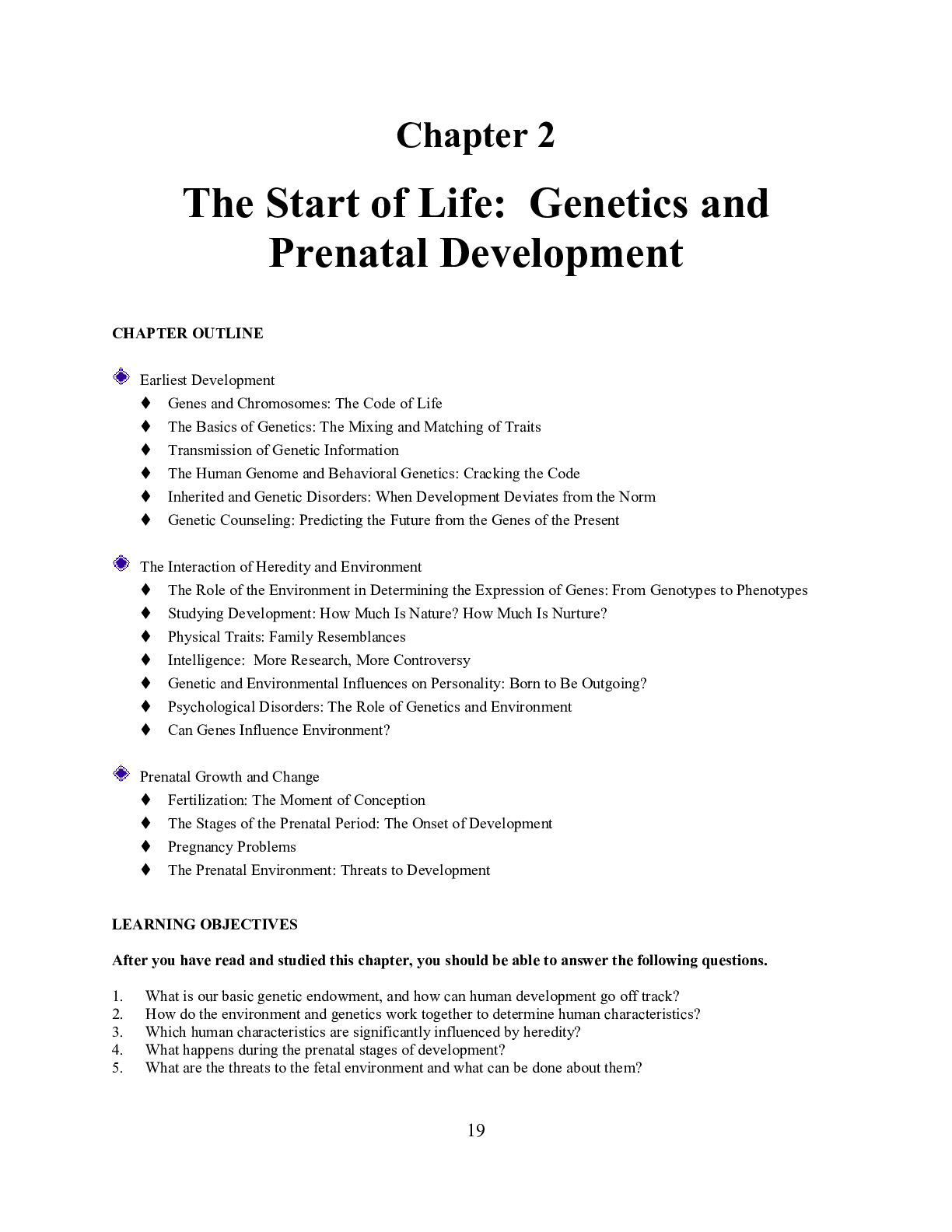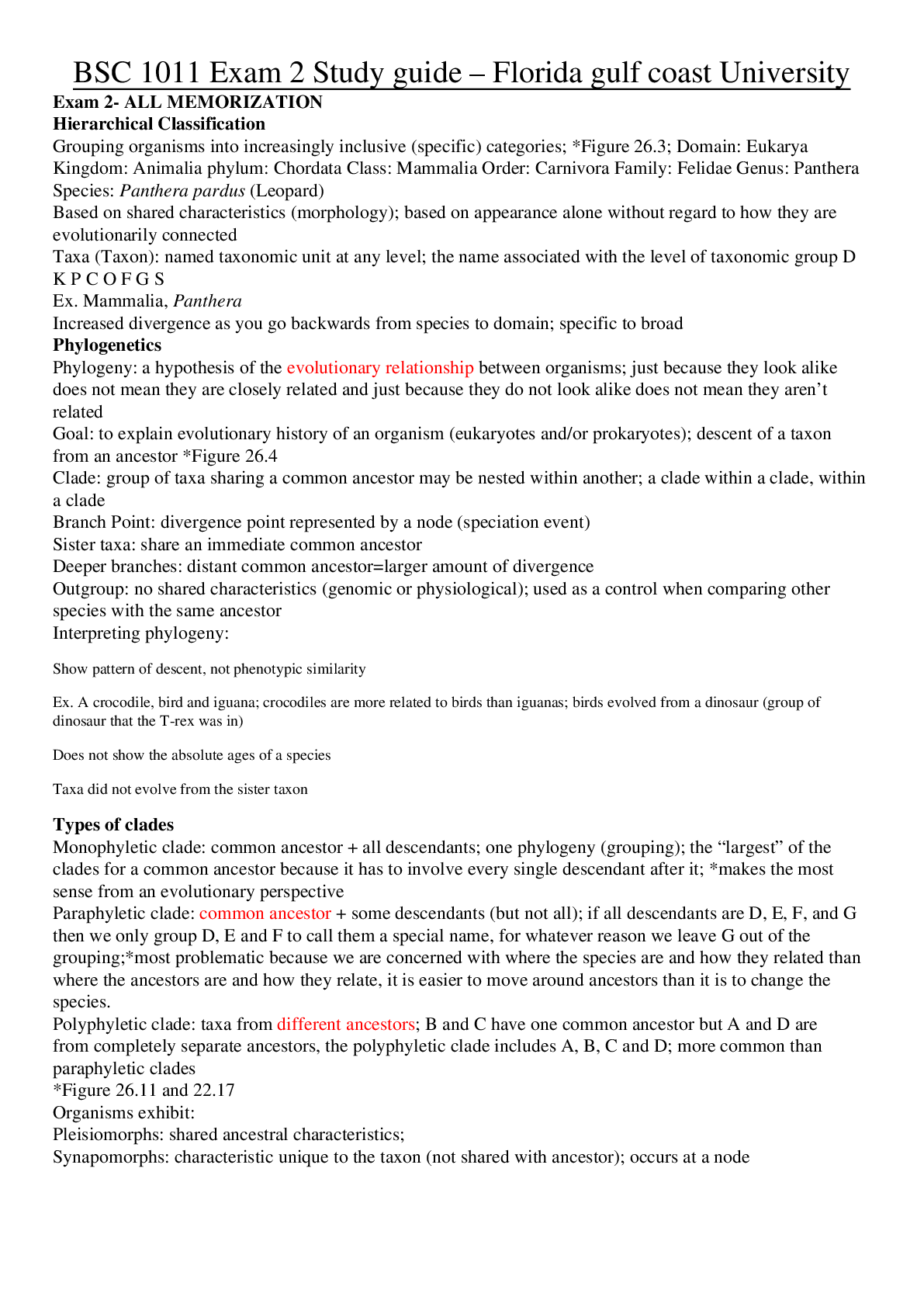*NURSING > STUDY GUIDE > NR224 Exam 2 Study Guide Revised (All)
NR224 Exam 2 Study Guide Revised
Document Content and Description Below
NR224 Exam 2 Study Guide Revised CH40: Oxygenation 1. What is atelectasis and how do we prevent it? - A collapse of the alveoli that prevents normal exchange of oxygen and carbon dioxide. - 2. R... espiratory wise, what are you looking for/at when observing a patient? Breathing patterns, chest wall movement and expansion, AP diameter? 3. What are the 6 P’s of dyspnea? - Pulmonary Bronchial Constriction - Possible Foreign Body - Pulmonary Embolus - Pneumothorax - Pump Failure - Pneumonia 4. If a patient has a pulse ox of 89% we do not immediately place on oxygen, what do we do instead? 5. What is orthopnea? - abnormal condition in which a patient uses multiple pillows when reclining to breathe easier or sits leaning forward with arms elevated. The number of pillows used usually helps to quantify the orthopnea (e.g., two- or three-pillow orthopnea) 6. If a client is experience orthopnea while laying flat in bed, what intervention can we recommend to improve their condition short term? - patient must sleep in a recliner chair to breathe easier. 7. What are the clinical signs and symptoms of hypoxia? - apprehension, restlessness, inability to concentrate, decreased level of consciousness, dizziness, and behavioral changes. 8. What is the first sign of hypoxia that you will observe in a patient? - blood pressure is elevated unless the condition is caused by shock. As the hypoxia worsens, the respiratory rate declines as a result of respiratory muscle fatigue. 9. What clinical manifestations of hypoxia are found late stages? - Cyanosis, blue discoloration of the skin and mucous membranes caused by the presence of desaturated hemoglobin in capillaries.10. What do you do if you get an abnormal pulse ox reading that does not match your physical assessment? Retake it??? - Example: a SPO2 reading of 76% for a client who’s breathing is unlabored at a rate of 12 without evidence of hypoxia 11. Who should receive a flu vaccine? - Annual flu vaccines are recommended for all people 6 months and older; patients with chronic illnesses (heart, lung, kidney, or immunocompromised), infants, older adults, and pregnant women can get very sick; thus they should be immunized. Close contacts of infants under 6 months should also be immunized. Seasonal flu vaccine protects against influenza viruses that research indicates will be the most common during that year. 12. Who should receive the pneumonia vaccine? - Pneumococcal vaccine (PCV13) is routinely given to infants in a series of four doses and is recommended for patients at increased risk of developing pneumonia. This includes all adults over 65 years of age, those with chronic illnesses or who are immunocompromised (such as HIV/AIDS), any adult who smokes or has asthma, and those living in special environments such as nursing homes or long-term care facilities 13. What are the different oxygen devices? What liters per minute do they require? - Nasal cannula: 1-6 L/min - Oxygen Mask: partial rebreather mask = 6-10 L/min; nonrebreather mask = minimum of 10 L/min; Venturi mask = 4-12 L/min 14. Which ones are used for oxygen support, which ones are used for oxygen and ventilation support? 15. What is the purpose of percussion? - Percussion detects the presence of abnormal fluid or air in the lungs. It also determines diaphragmatic excursion. 16. What is the importance of an incentive spirometer? - encourages voluntary deep breathing by providing visual feedback to patients about inspiratory volume. It promotes deep breathing and prevents or treats atelectasis in the postoperative patient.- How do we use it? 17. Why is it important (respiratory focus) for patients to: - Stay hydrated - Cough & deep breathe - Stay mobile 18. Describe the nursing diagnoses that you would expect for a patient with COPD. CH 45: Urinary Elimination 19. What is the function of the following: -urine is produced in the nephron - Kidneys: remove waste products from the blood and play a major role in the regulation of fluid and electrolyte balance. - Ureters: carries urinary waste to the bladder. - Bladder: a hollow, distensible, muscular organ that holds urine. - Urethra: Urine travels from the bladder through the urethra and passes to the outside of the body through the urethral meatus. 20. What hormone comes from the kidneys and stimulates production of RBCs? - Erythropoietin, produced by the kidneys, stimulates red blood cell production and maturation in bone marrow. 21. How does renin increase your blood volume and blood pressure? - Renin functions as an enzyme to convert angiotensinogen (a substance synthesized by the liver) into angiotensin I. Angiotensin I is converted to angiotensin II in the lungs. Angiotensin II causes vasoconstriction and stimulates aldosterone release from the adrenal cortex. Aldosterone causes retention of water, which increases blood volume. The kidneys also produce prostaglandin E2 and prostacyclin, which help maintain renal blood flow through vasodilation. These mechanisms increase arterial blood pressure and renal blood flow. [Show More]
Last updated: 1 year ago
Preview 1 out of 16 pages

Reviews( 0 )
Document information
Connected school, study & course
About the document
Uploaded On
Aug 07, 2021
Number of pages
16
Written in
Additional information
This document has been written for:
Uploaded
Aug 07, 2021
Downloads
0
Views
38


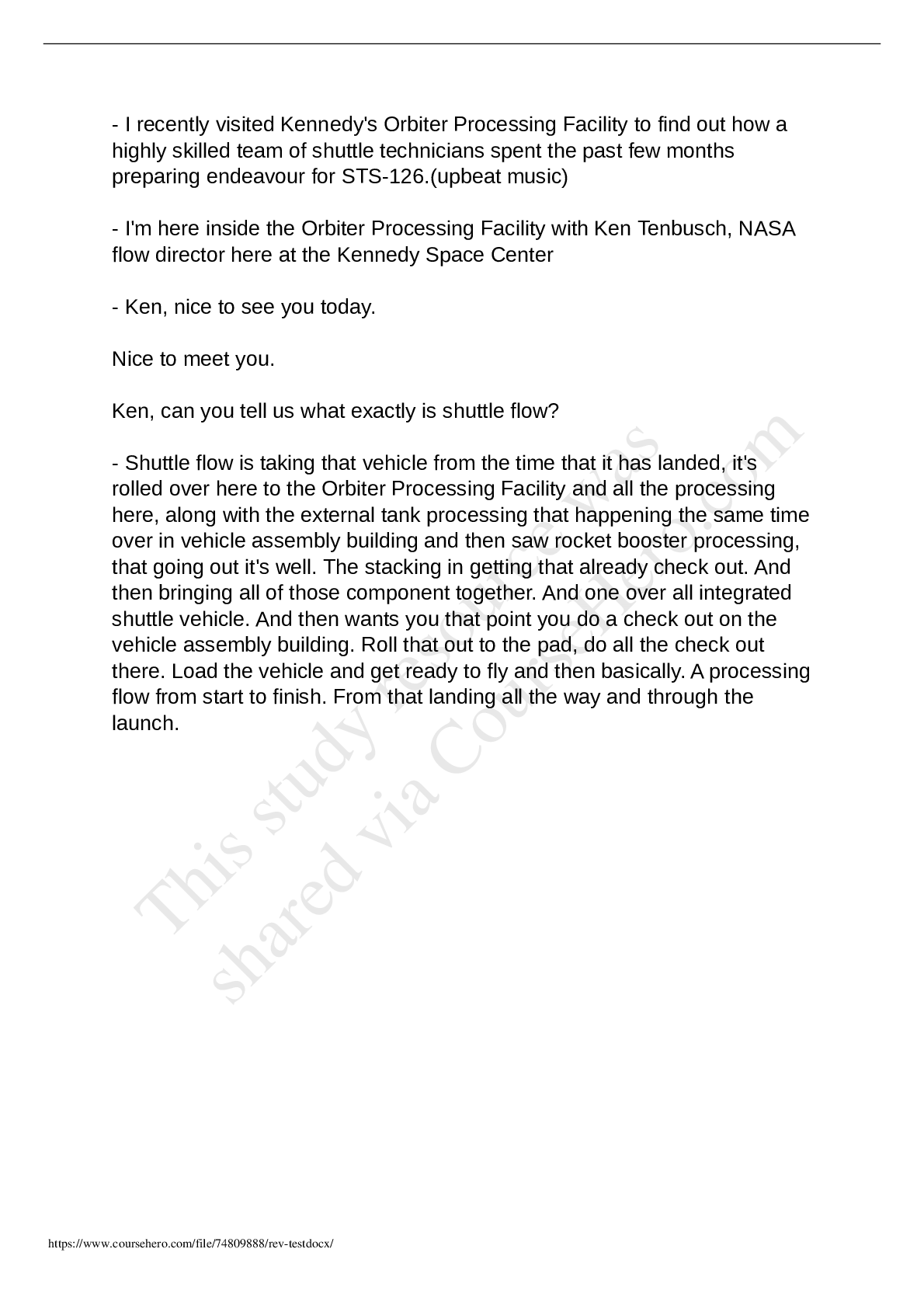

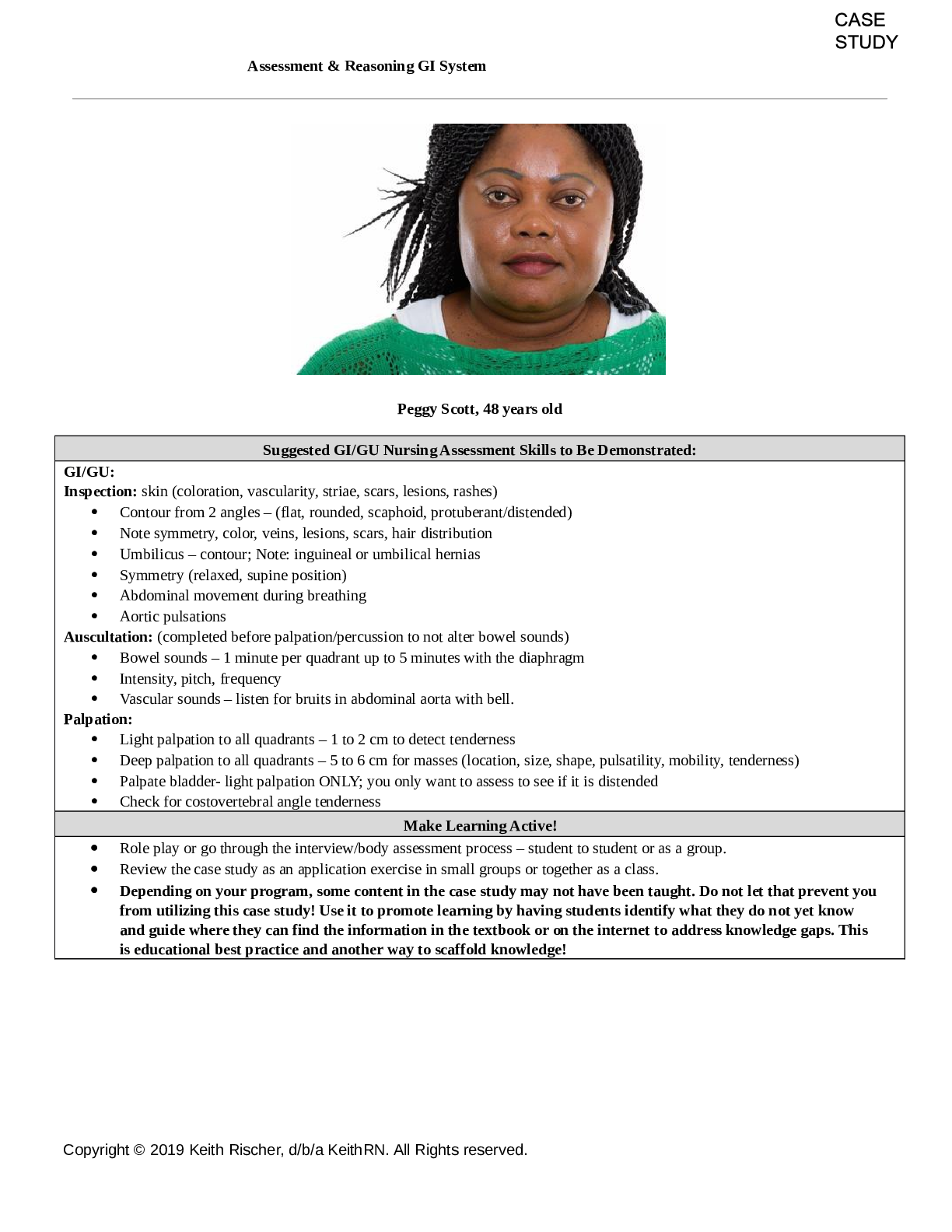

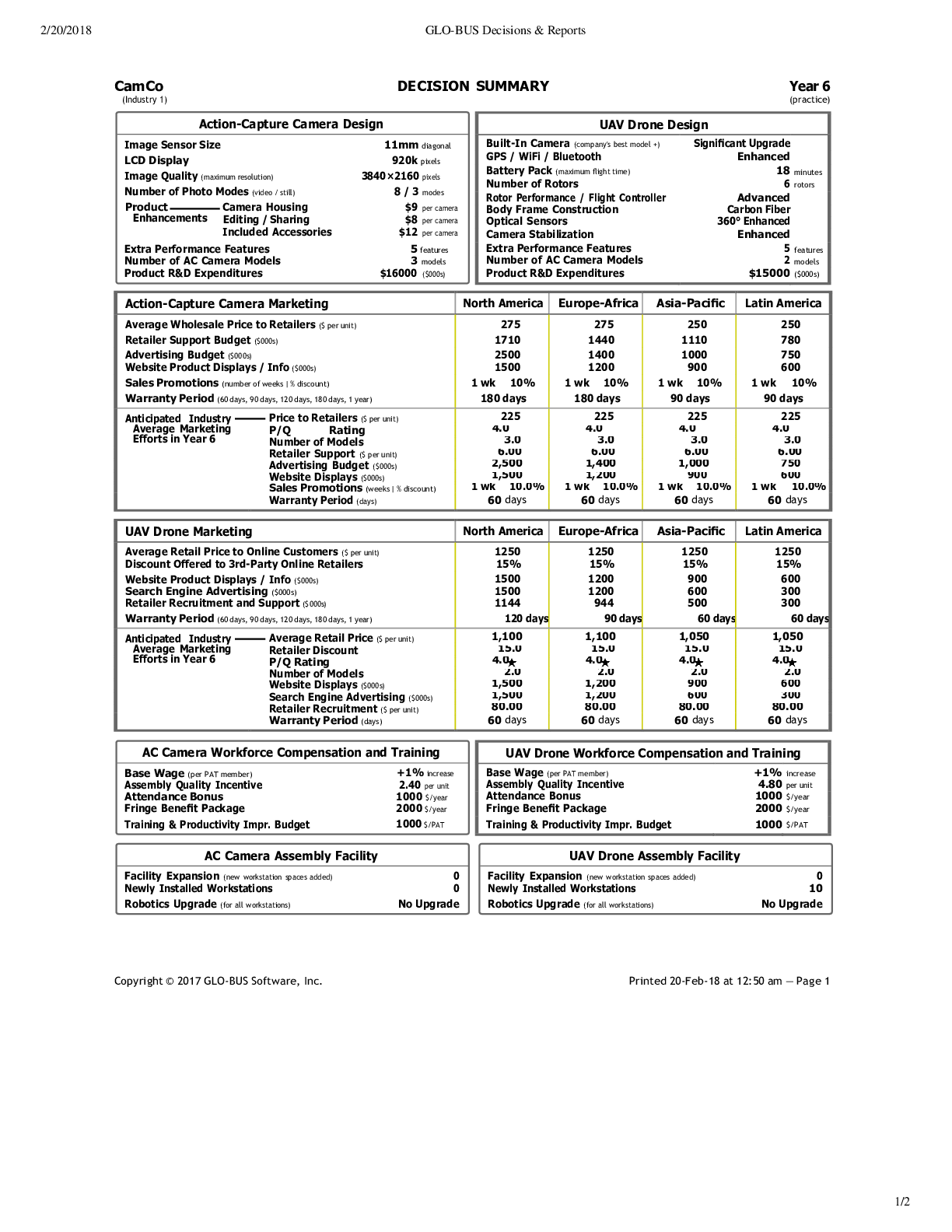
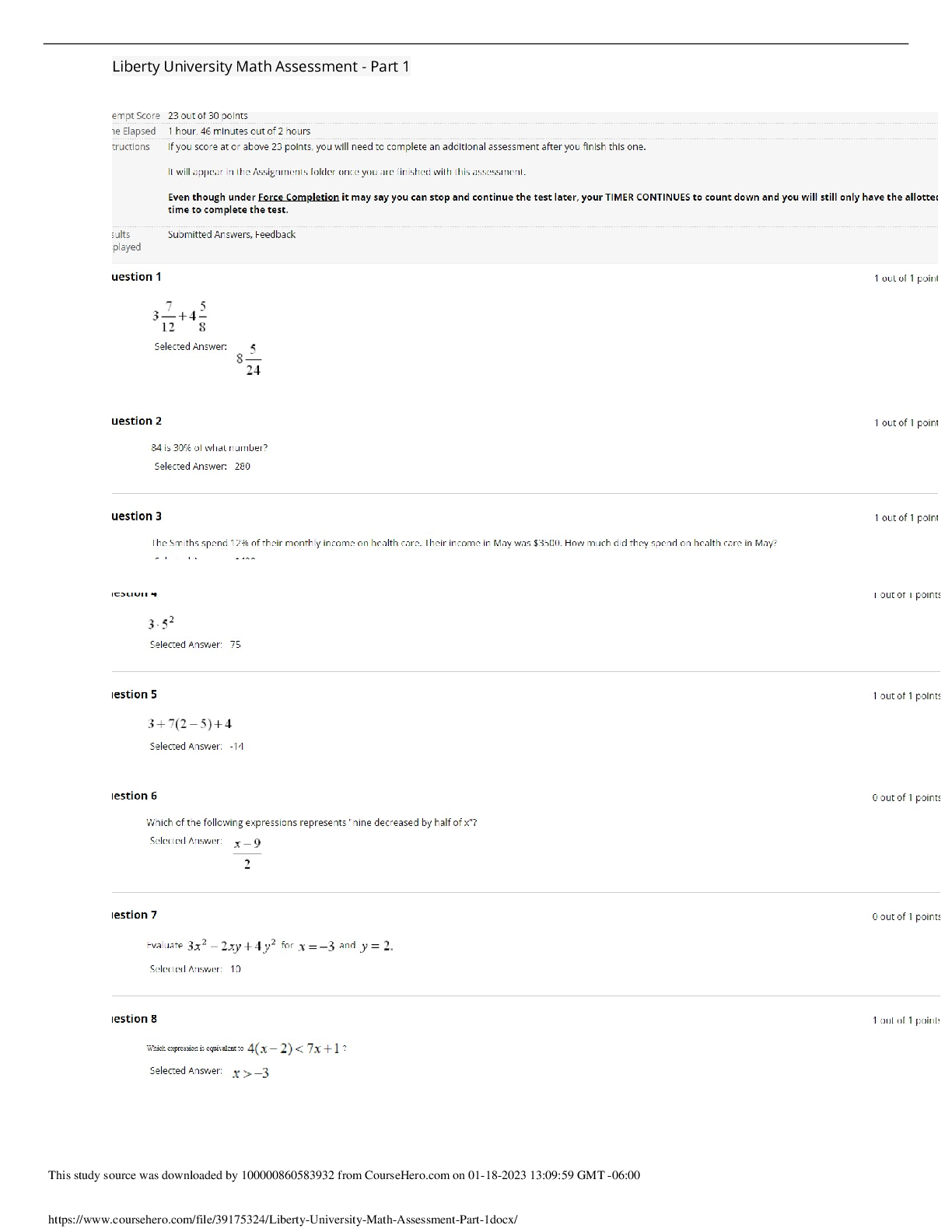

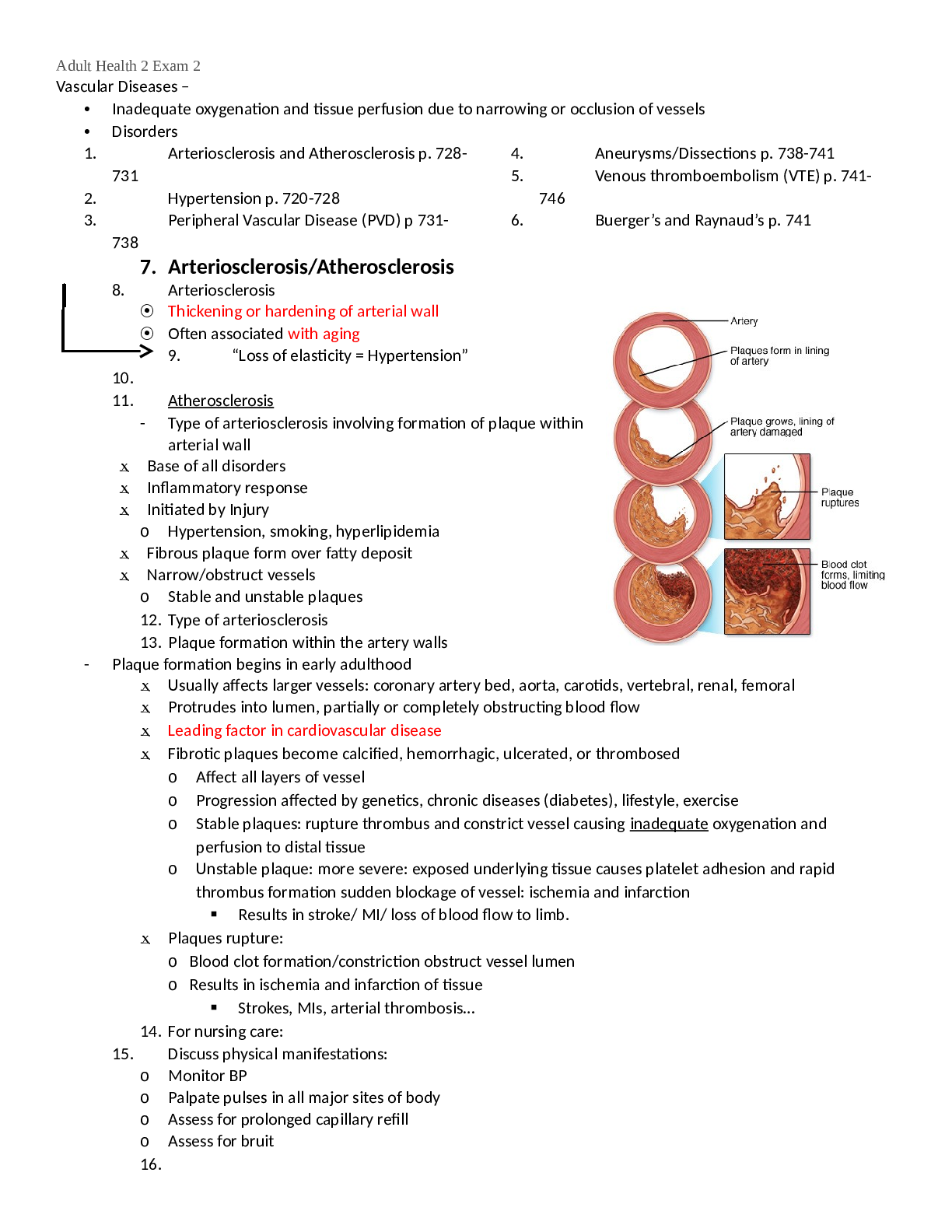
.png)

.png)

